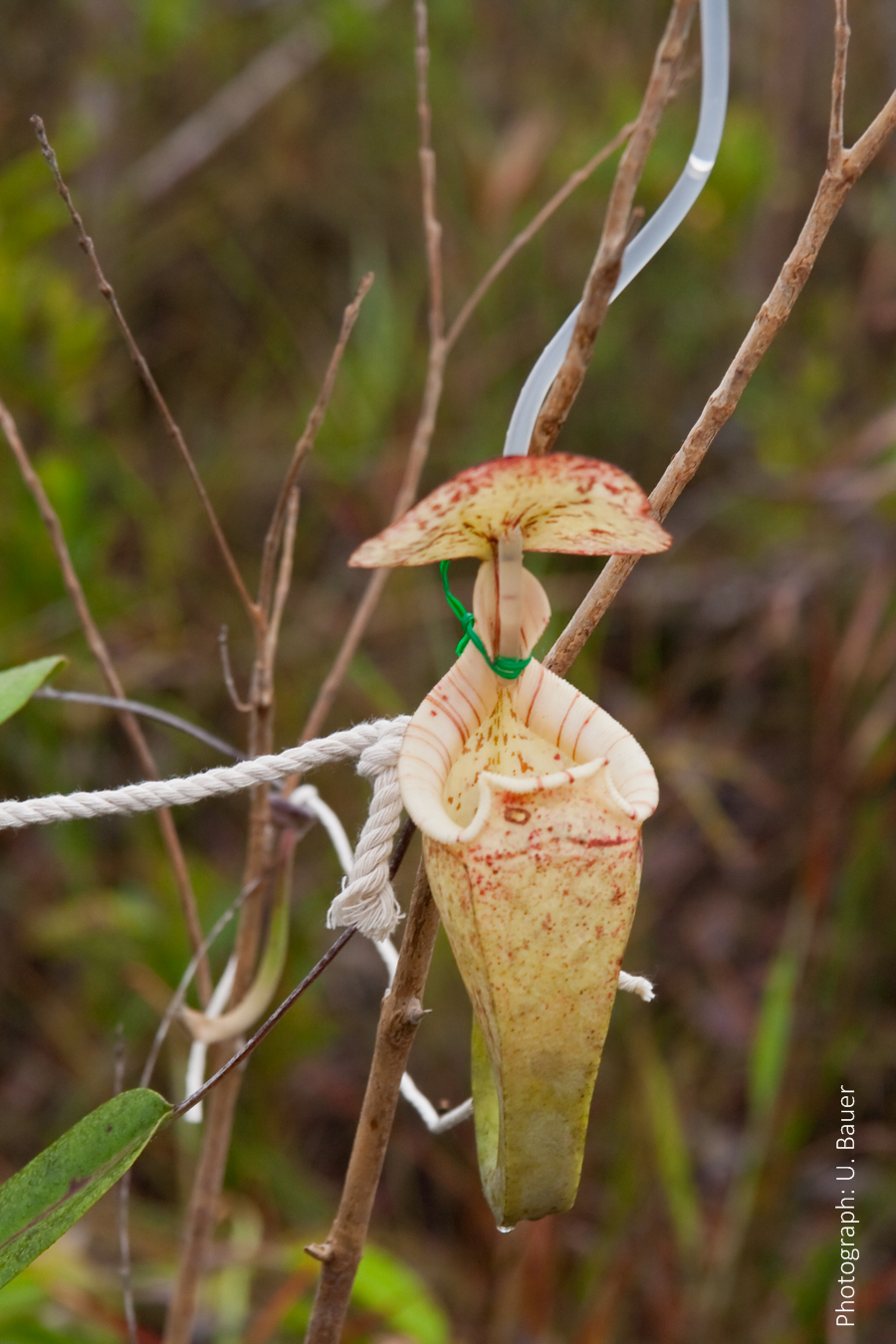Biologists have shown that a pitcher plant has a remarkable adaptation for varying the slipperiness of the rim of its trap (the peristome). In Borneo, the pitcher plant (Nepenthes rafflesiana) traps sporadically large group of ants from the same species. In experiments where the trapping surfaces were kept continuously wet the plants no longer captured large groups of ants. When scout ants find a pitcher trap full of sweet nectar, they return to the colony and recruit many more ant workers. A super-slippery trap will capture most of these scout ants preventing recruitment of more ants. Now the story gets better: It seemed as if something plays with the stickiness dial on the pitcher plants traps. For part of the day the peristome stays dry and sugary to ensure that scout ants discover the candyland and get super excited to return to the colony. later on, the trap becomes wet and slippery and large numbers of recruited ants get captured. What plays with the stickiness dial?
The plant of course cannot sense the presence of ants and thus cannot actively switch on (or off) its traps. The “switch” is in the weather conditions: rain and air humidity changes turn the trap “on” or “off”. The plant can only take little influence by secreting nectar onto the trap surface. This is not enough to make the trap wet under dry weather conditions: the nectar evaporates too quickly. However, the sugar remains on the surface, and that helps to get the trap wet again earlier when the air humidity starts rising in the afternoon. (It is the same effect that makes your household sugar form clumps when you leave the jar open in humid conditions: sugar is hygroscopic, i.e. it draws humidity from the air).
Pitcher plants most certainly have a rich body of natural history.



1 Comment